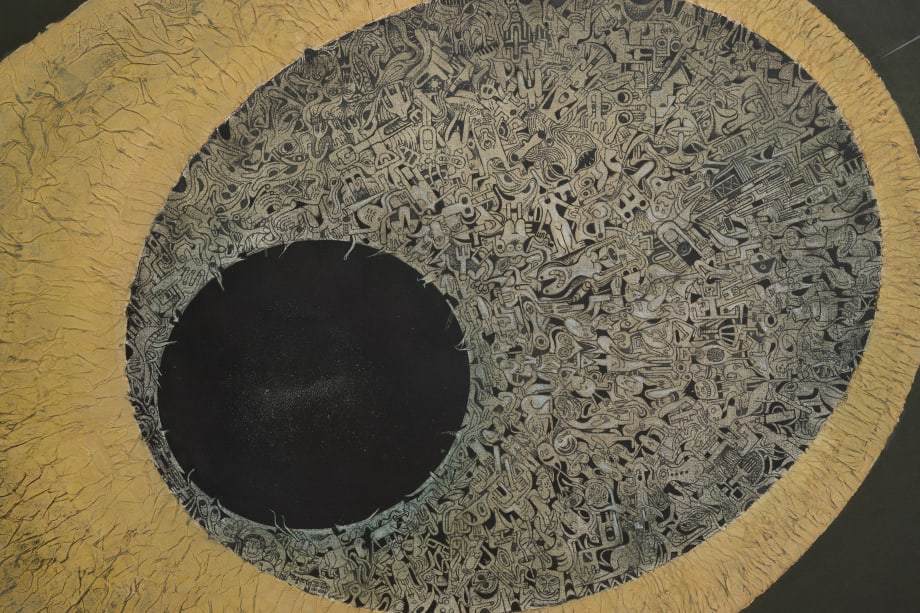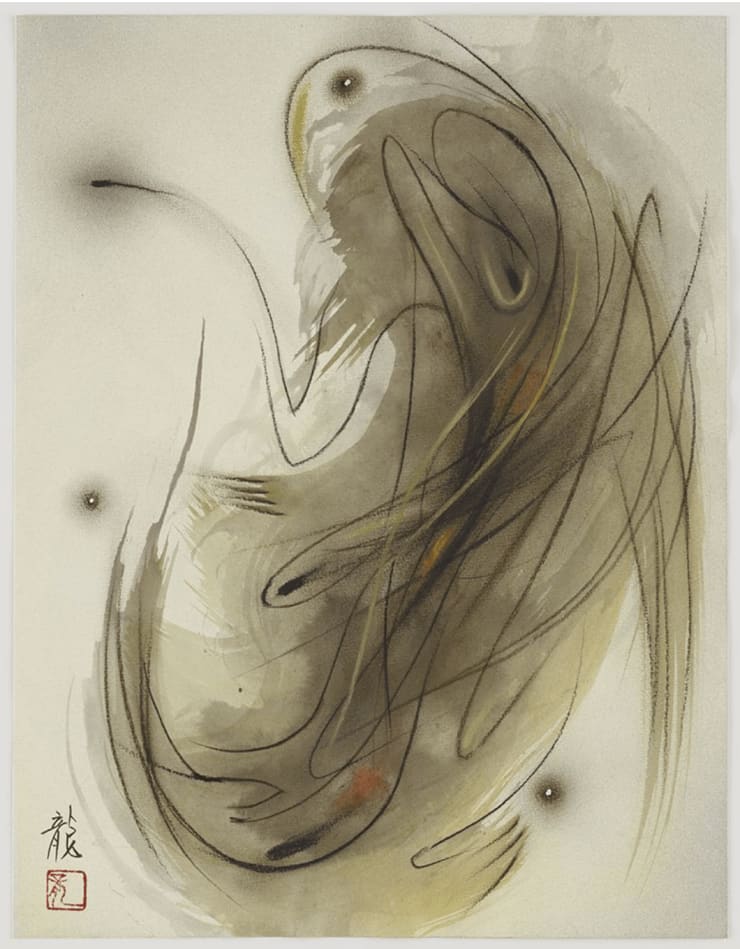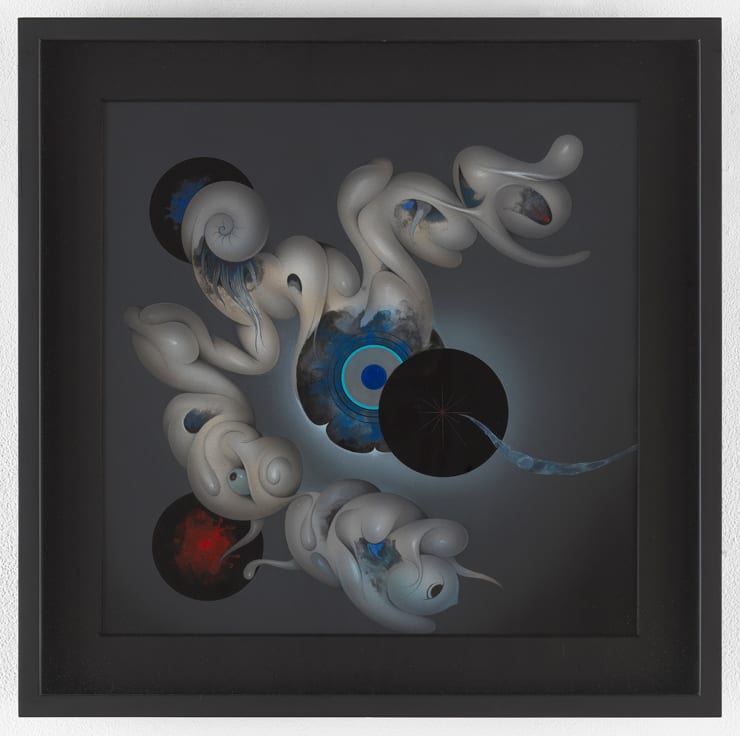Tatsuo Ikeda
Tatsuo Ikeda (Japanese, 1928–2020)
Born in Saga Prefecture, Japan, in 1928, the course of Ikeda’s early life was dramatically altered by the ongoing intensity of World War II, culminating in his service as a kamikaze pilot at the age of fifteen. Spared by the ending of the war, in 1948, Ikeda made the decision to live a more free and anti-authoritarian life, moving to Tokyo to attend Tama Art University where he became engaged in Tara Okamoto and Kiyoteru Hanada’s Avant-garde Art Study Group.
After the Korean War broke out in 1950, the artist pursued a strong anti-war position, Ikeda created expressive realist drawings that fused reportage and satire. His early work depicted the heartlessness of society in the age of automation and questioned the role of individual responsibility and free will after feeling betrayed by his government, and the political and cultural machinery of interpersonal and international conflict. Ikeda organized the artists and writers group, NON, and his drawings from this period exposed domestic and international political corruption, eventually developing into monstrous portraits and grotesque creatures that reveal the dark side of human nature.
In the 1960s, the artist produced several series of works inspired by a wide range of motifs, such as masks (Hundred Masks), toys (Toy World), and anatomical images (Dissection Archaeology). In the following decade, harboring a profound fascination with space and time, he carried out conceptual long-term performances, Asama – Ararat Olive’s Ring Plan and Brahma Tower, in which he tried to experience an unimaginable perpetual time. In his series, Brahman, which he began in 1973, the artist found release from social causes to embrace a state of eternal truth and bliss occupied by genderless embryonic forms in infinite space. Narrating his own story of genesis, the artist turned his attention inward, exploring the metaphysical bonds that underlie and unify the universe—defining his paintings as a “wormhole connecting the inner and outer worlds.”
Ikeda continued exploring further artistic possibilities, creating assemblage and relief works made with found objects, and handscrolls depicting the flow of time, as well as a series of paintings, Phases of Fields, about universal gravitation. In addition to visual art, Ikeda was a critically celebrated writer; and his work has been exhibited extensively in Japan and abroad. The artist was also featured in the 2010 documentary film, ANPO: Art X War, directed by Linda Hoaglund.
Ikeda died in November, 2020, in Tokyo.
-
 Tatsuo IkedaDance of Lines, 2008Charcoal and watercolor on paper15 7/8 x 12 1/4 in
Tatsuo IkedaDance of Lines, 2008Charcoal and watercolor on paper15 7/8 x 12 1/4 in
40.3 x 31.1 cm -
 Tatsuo IkedaElliptical Space No. 1, 1963-1964Oil and collage on plywood30 x 48 in
Tatsuo IkedaElliptical Space No. 1, 1963-1964Oil and collage on plywood30 x 48 in
76.2 x 121.9 cm -
 Tatsuo IkedaField Phase: Waftage No. 4, 2006Acrylic on paper15 3/4 x 12 1/2 in
Tatsuo IkedaField Phase: Waftage No. 4, 2006Acrylic on paper15 3/4 x 12 1/2 in
40 x 31.8 cm -
 Tatsuo IkedaUntitled, 1979Acrylic on paper15 1/2 x 15 1/2 in
Tatsuo IkedaUntitled, 1979Acrylic on paper15 1/2 x 15 1/2 in
39.4 x 39.4 cm




